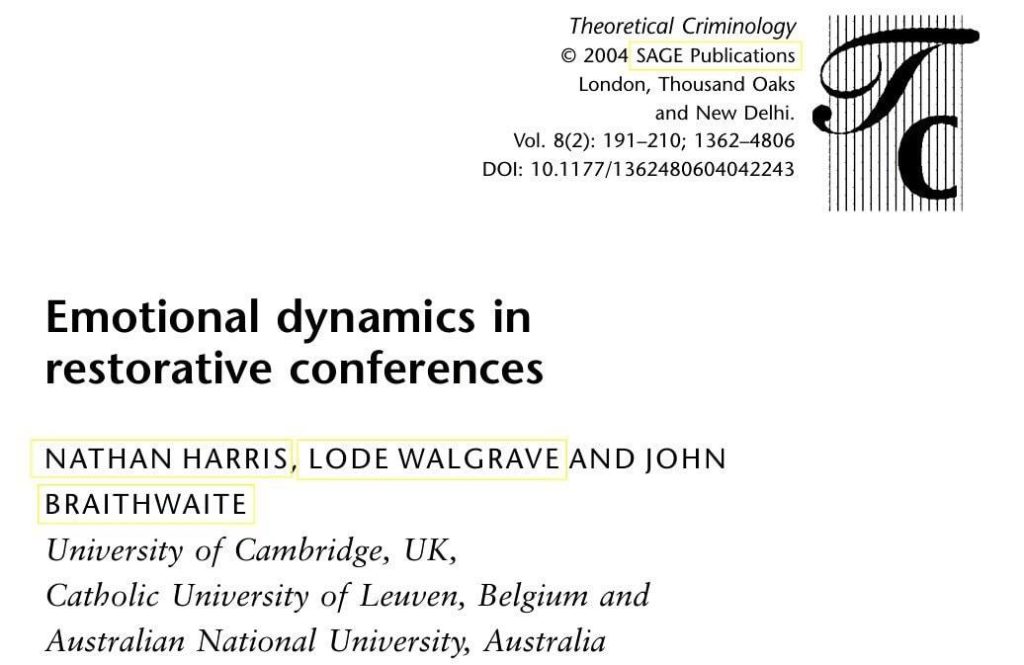Braithwaite, Harris, Walgrave三位學者在2004年的論文對修復中的情緒轉變有更詳細的描述,對於大家有爭議的恥感、懊悔、同理等情緒有比較完整的說明。可以看得出來,修復的動力並非來自【刺激恥感】,而是透過 【 同理與尊重 】 。
Braithwaite的明恥整合論( reintegrative shame theory)一直是修復式正義的重要理論,卻常常被人誤解為要對行為人【刺激恥感】 或 【誘發恥感】才能讓其承擔責任。殊不知,根據許多追蹤研究,這種方式反而適得其反,對再犯率並不會降低。 因此Braithwaite本人於2004 年發表這篇論文加以澄清其理論。茲翻譯兩段重要的內容如下:
…尊重和重新融合的過程使行為人感受到同理。 其中之一,〈同理〉是行為人真正理解其行為所造成傷害的重要閘道,是轉為產生真誠的悔恨和修復傷害的意願的非常重要因素。
Respectful and reintegrative processes enable offenders to feel empathy.
One of these is that empathy is an important gateway for offenders truly to understand the harm caused by an offence, which in turn is important for genuine remorse and a willingness to repair the harm done.
同理(empathy)和慈愛(compassion)是情緒處理過程的重要觸發者。同理心往往可以導致懊悔(remorse),內疚(guilty)和羞恥(shame)的情緒,是激發行為人的慈愛心至關重要因素。這種情況只有在行為人自己受到尊重和同理的情況下才會發生。與傳統的法庭訴訟相比,這是良好修復會議的主要優勢之一。
Empathy and compassion as important triggers of the emotional process .
Thus, it is often empathy that leads to the emotions of remorse, guilt and shame. As a consequence, it is crucial to activate the potential for compassion in the offender. This can happen only in a situation wherein the offender him- or herself experiences respect and empathy. This is one of the major strengths of good conferencing, in comparison with traditional court proceedings.
參考論文: Nathan Harris, Lode Walgrave & John Braithwaite: Emotional dynamics in restorative conferences. Theoretical Criminology. Vol. 8(2): 191–210; 1362–4806, 2004. https://doi.org/10.1177/1362480604042243



